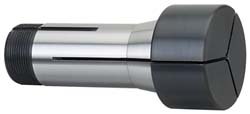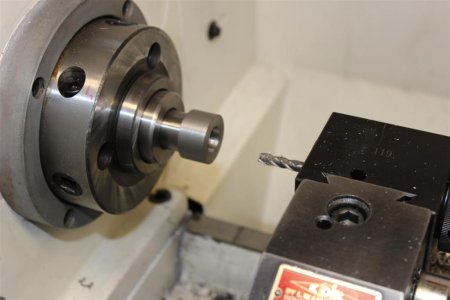I've never been a big fan of collet work, but the real advantage is in doing work that starts as a standard size round (or hex, or square, depending on the collet), is relatively short, and perhaps needs to be held on a finished surface for a secondary operation. Of course, collets have a limit on the size stock you can work with, so they really shine only on a limited range, smaller than many parts some of use need to make. I guess that's one of the reasons I don't have a serious need for them. And I am not one for swapping chucks around on machines on a whim. I have a good quality 3 jaw on by newer lathe, and a so-so 3 jaw on the older Monarch. For the same basic reasons people use collets, I prefer to use soft jaws that replace the bolt-on top jaws on the 3 jaw chucks. When properly prepared, their runout is practically nonexistant. It has the advantage over collets in that the size is not limited to something on the order of >1.00". More like the capacity of the chuck in normal use. Plus the same methodology can be used for ID chucking.
In general though, proper planning of the job can eliminate most instances of the need for accurate chucking to the point of needing a collet. If working to a drawing, the sequence can generally be set up to turn all the features that must run true together at the same chucking. Granted, the part generally will need machining on both ends, but in my experience, there is ample concentricity tolerance for a typical chuck to be used without undue worry. But if the requirements are stiff, soft jaws to the rescue again. Near zero runout is not difficult to achieve. Soft jaws can be shop made, or purchased commercially made for just about any chuck with 2 piece jaws.
I'm not trying to talk anyone out of using collets. I believe they have a place in many shops. But they are rarely a necessity, at least in my experience. They can make some jobs simpler, and faster, but this is supposed to be a hobby for most of the guys here, and collets provide the greatest benefits in a production shop. I worked a turret lathe with collets at McEvoy here back in the 70's. I ran hundreds, if not thousands of valve stems with the collet machine, and there would be no comparison with any other means of workholding. But in my shop, since I do exclusively R&D and prototype work, usually of odd sized parts a little larger than collet systems support, I haven't any use for them at present. I do have a set (most of one, anyway) of 5C collets for a future project - a tool grinder. I suppose that if I had a need, I would build a chuck that uses them, but I really hate disturbing a well running 3 jaw.



